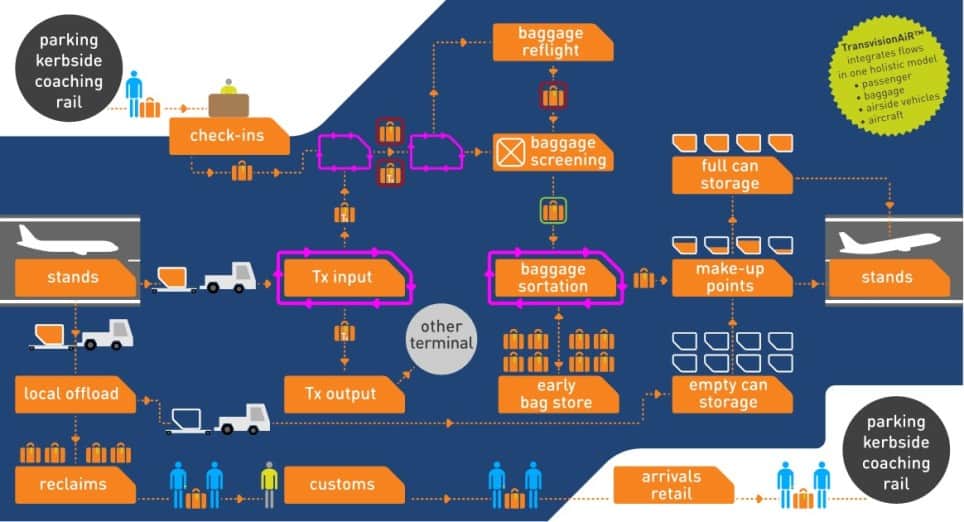
The storage and transfer of baggage is a crucial element of the efficiency of any airport, whether it is a large hub or a smaller regional airport. Using the experience we’ve gained from analysing and simulating baggage flows at airports such as GMR Hyderabad as well the research and insight providing from our forthcoming White Paper, Baggage Handling, we’ve looked at key parts of the process and how better Early Bag Storage can be put in place to improve baggage handling at airports.
The first part of our blog looks at the process of baggage handling, and how it is changing.
Check-in
Although passengers usually arrive at airports the same way, their requirements with baggage can now be diverse. They may have already checked in online, they may not have any baggage, or they may be just passing through the airport.
With the arrival of new automated technology their experiences can be very different. As we have already reported, automated check in at Schipol Airport now allows passengers to check in and process their bags themselves, printing off tags and placing them on the conveyor. The traditional method is of course visiting the check in desk and allowing a member of airline staff to process the baggage, however that too is under some changes as more and more airline alliances now share desks.
The different types of check-ins are very much dependent on the type and the business model of an airport. These can include:
- Online check-in
- Mobile check-in
- Check-in Counters (Manned)
- Check-in Kiosks (self-service)
- Common check-in (Airline alliances sharing desks)
- Bag drop Counters (self-service)
- Bag drop Counters (Manned)
Baggage Handling
While the passengers pass through security and rest before their flight, their bags undergo a lengthy journey before they reach their departing aircraft. Direct bags are conveyed into hold baggage security screening machines, inspection and classified in terms of their nature of a bag; early, on time or missed.
Early Bags are directed to an Early Bag Store (EBS). This is a facility that is becoming increasingly crucial with the growing airline alliances and partnerships that are leading to common check-ins.
On time bags make their way to dedicated Make up Points (MUPs) where they are shifted to Unit Load Device (ULD) or a Wessex depending on the aircraft. These are then driven to aircraft from baggage sortation hall on tugs and dollies.
Missed bags, those that reach the decision point after their flight has departed, are re-flighted onto the next available flight, making the bag either on time or early. The bags then follow the relevant processes, although storage of early bags, especially if the next flight is not the same day, is an increasing problem.
Transfer bags, those that arrive into an airport from inbound flights to be connected to other flights, present another challenge. These transfer bags are propelled to dedicated areas to be sorted and taken to their corresponding aircraft.
Arrivals
Once the bag has reached its final destination, it is driven from ramp (aircraft side) into baggage reclaim hall. Passengers re-claim their bags and make their way out of the baggage hall through to Customs Control area where their bags may be screened and checked. Passengers then leave the airport.
The Challenges
Baggage handling is a lengthy and complex process for airports. In our next blog, we’ll look at the challenges presented and how certain methods to improve Early Bag Stores and Make Up Points can be used effectively to create more efficient airports and a better passenger experience.

